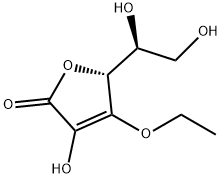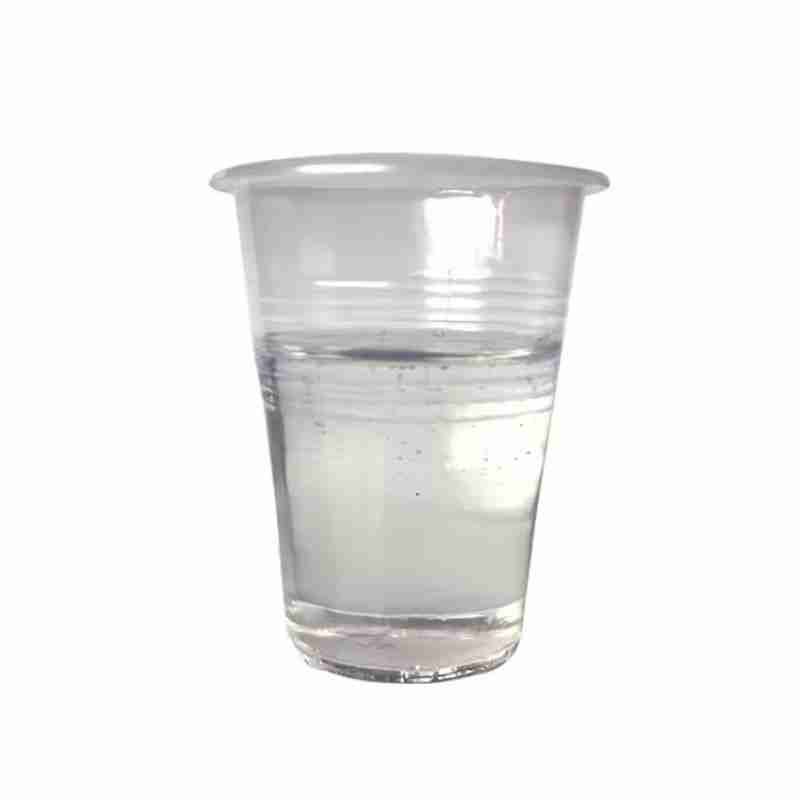3-O-Ethyl-L-ascorbic acid CAS#86404-04-8
3-O-Ethyl ascorbic acid ether, also called VC ethyl ether, is an ascorbic acid derivative. Ascorbic acid is a naturally occurring antioxidant and free radical scavenger, a reducing agent in the conversion process of biological enzymes, and has a preventive effect on some chronic diseases (cancer, diabetes and allergic skin diseases). From the molecular structure of ascorbic acid, it can be seen that compared to the 2-position enol hydroxyl group, the 3-position enol hydroxyl group has higher activity on electrophiles, and it is the product of 3-O-alkylation during O-alkylation modification. Mainly. 3-O-Ethyl ascorbate ether is a product of ascorbic acid-3-O-ethylation. It has a simple molecular structure and is easily absorbed by the skin. After entering the dermis through the stratum corneum of the skin, it is easily decomposed by the biological enzymes in the human body. The effect of ascorbic acid effectively solves the fat solubility problem of ascorbic acid, and is widely used in cosmetics as a whitening agent and antioxidant.
发送询盘
3-O-Ethyl-L-ascorbic acid CAS#86404-04-8
| 3-O-Ethyl-L-ascorbic acid Basic information |
| Product Name: | 3-O-Ethyl-L-ascorbic acid |
| Synonyms: | 3-O-Ethyl-L-ascorbic Acid;3-o-ethyl-l-ascorbic acid;3-O-ETHYLASCORBICACID;(5R,1’S)-5-(1,2-Dihydroxy-ethyl)-4-ethoxy-3-hydroxy-5H-furan-2-one;(5R)-5-(1,2-dihydroxyethyl)-4-ethoxy-3-hydroxy-2,5-dihydrofuran-2-one;(5R)-5-[(1S)-1,2-dihydroxyethyl]-4-ethoxy-3-hydroxyfuran-2(5H)-one (non-preferred naMe);3-O-Ethyl vitaMin C ester;Only VCE |
| CAS: | 86404-04-8 |
| MF: | C8H12O6 |
| MW: | 204.18 |
| EINECS: | 617-849-3 |
| Product Categories: | Vitamine C derivative;API;86404-04-8 |
| Mol File: | 86404-04-8.mol |
 |
|
| 3-O-Ethyl-L-ascorbic acid Chemical Properties |
| Melting point | 112.0 to 116.0 ??C |
| Boiling point | 551.5??50.0 ??C(Predicted) |
| density | 1.46??0.1 g/cm3(Predicted) |
| vapor pressure | 0-0Pa at 20-25?? |
| storage temp. | Sealed in dry,2-8??C |
| solubility | Methanol (Slightly), Water (Slightly) |
| pka | 8.89??0.40(Predicted) |
| form | Solid |
| color | White to Off-White |
| InChI | InChI=1S/C8H12O6/c1-2-13-7-5(11)8(12)14-6(7)4(10)3-9/h4,6,9-11H,2-3H2,1H3/t4-,6+/m0/s1 |
| InChIKey | ZGSCRDSBTNQPMS-UJURSFKZSA-N |
| SMILES | O(CC)C1=C(O)C(=O)O[C@@H]1[C@H](CO)O |
| LogP | -0.8–0.64 at 20-25?? and pH7 |
| Surface tension | 69-72.4mN/m at 1g/L and 20?? |
| Safety Information |
| HS Code | 2936.27.0000 |
- 2
- 2-diallylpent-4-en-1-amine
- 4
- 95-16-9
- Ammonium sulfamate
- Benzothiazole
- cas:67889-00-3ح2
- cas:83524-75-8 | pigment black 32
- cas:928836-00-4 | 2
- cas:932745-70-5 | 4
- Chemical Minerals
- Coconut diethanolamide
- Daily Chemicals
- discount
- for sale
- General pvc resin
- hexyl D-glucoside
- in stock
- Lauramidopropyl betaine
- LAURIC ACID MONOETHANOLAMIDE
- Petroleum Additives
- Plasticiser
- Ploymers
- price
- PVC
- quotation
- Raw Materal
- Remove term: Petroleum Additives Petroleum Additive
- SODIUM ETHYL 2-SULFOLAURATE
Related Products
Polyhexamethylene guanidine hydrochloride, often abbreviated as PHMG-HCl, is a high molecular weight polymeric biguanide compound known for its potent antimicrobial properties. With a chemical structure that features a long chain of methylene groups bridged by guanidine units, PHMG-HCl is effective against a broad spectrum of microorganisms, including bacteria, viruses, and fungi.
This hydrochloride salt form of PHMG is highly soluble in water and is commonly used in various applications due to its non-irritant and non-toxic nature to human skin and mucous membranes. It is widely recognized for its ability to form a colorless and odorless solution, making it an ideal choice for use in personal care products, medical disinfectants, and water treatment processes.
The versatility of PHMG-HCl lies in its cationic nature, which allows it to bind to negatively charged microbial cell walls, disrupting their integrity and leading to cell death. This mechanism of action contributes to its effectiveness as a preservative and disinfectant. Moreover, its substantivity, or the ability to adhere to surfaces, enhances its long-lasting antimicrobial activity.
In summary, Polyhexamethylene guanidine hydrochloride is a reliable and efficient antimicrobial agent, pivotal in industries where hygiene and cleanliness are paramount, offering a safe and sustainable solution for microbial control.
Silicones are a family of synthetic polymers known for their versatility and stability. They are heat-resistant, non-toxic, and have excellent electrical insulation properties. Commonly used in various industries such as construction, automotive, aerospace, and personal care products, silicones offer a wide range of applications from sealants and adhesives to lubricants and medical devices. Their resistance to extreme temperatures and weathering makes them a preferred choice for many high-performance applications.
Tetraacetylethylenediamine is a fully acetylated derivative of ethylenediamine, offering a high reactivity as an intermediate in organic synthesis. Its unique structure makes it a critical component in the production of specialty chemicals and pharmaceuticals, ensuring a wide range of applications in the chemical industry.
Chemical Name: Imazalil Sulfate
CAS No.: 58594-72-2
Molecular Formula: C14H14Cl2N2O.H2SO4
Molecular Weight: 395.26
Appearance: Solid
Chemical Name: Dehydrocholic acid
Synonyms: Acide dehydrocholique; Triketocholanic acid
CAS No.: 81-23-2
Molecular Formula: C24H34O5
Molecular Weight: 402.53
Appearance: Powder
Terpene resin is a type of natural resin derived from terpenes, which are organic compounds found in various plants. It is known for its aromatic properties and is commonly used in the production of fragrances, flavorings, and as a component in adhesives and coatings within the chemical industry. Terpene resin offers a range of benefits, including enhancing the solubility of essential oils and providing a stable base for various applications. Its natural origin makes it a preferred choice for eco-friendly products.
Chemical Name: Zinc citrate
Synonyms: Zinc citrate trihydrate
CAS No.: 546-46-3
Molecular Formula: C6H8O7Zn
Molecular Weight: 257.5
Appearance: White powder
Chemical Name: UV-120
Other Name: (2’,4’-Di-tert-butylphenyl 3,5-di-tert-butyl-4-hydroxybenzoate)
CAS No.: 4221-80-1
Molecular Fomula: C29H42O3
Molecular weight: 438.66
Assay: ≥99%(LC)
Product name:HYDROXYPROPYL GUAR HYDROXYPROPYLTRIMONIUM CHLORIDE
Purity:99%
Appearance:Light Yellow Powder
Package:Customized according to customer needs.
Sample:Available
Chemical Name: 1,1,2,2-Tetrachloroethane
Other Name: Tetrachlorethane
CAS No.: 79-34-5
Molecular Formula: C2H2Cl4
Molecular Weight: 167.85
Appearance: Liquid
Chemical Name: Potassium Castorate
CAS No.: 8013-05-6
Molecular Formula: C57H107K3O12
Molecular Weight: 1101.74718
Appearance: Yellow Liquid
Chemical Name: STODDARD SOLVENT
CAS No.: 64742-88-7
Appearance: Colorless or Light Yellow Liquid


















